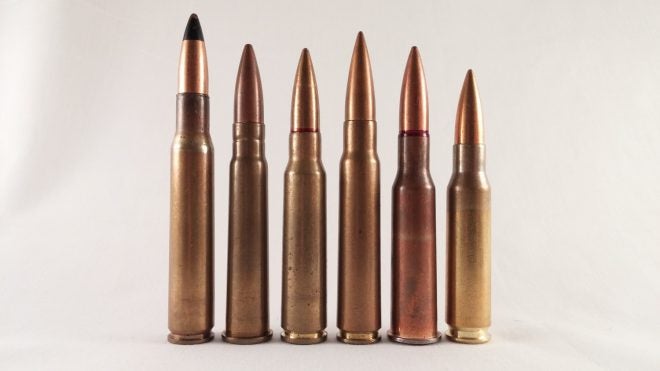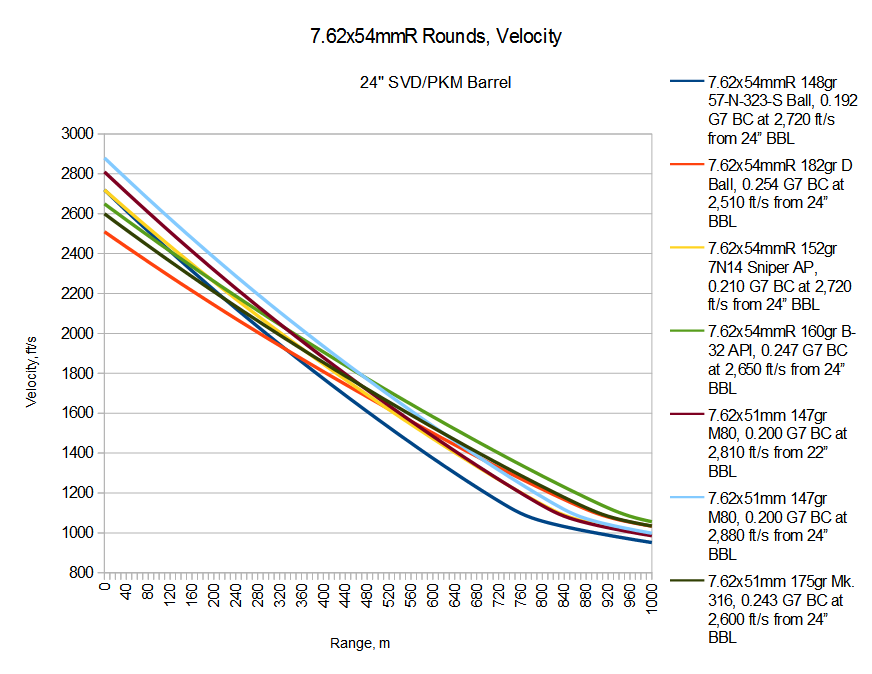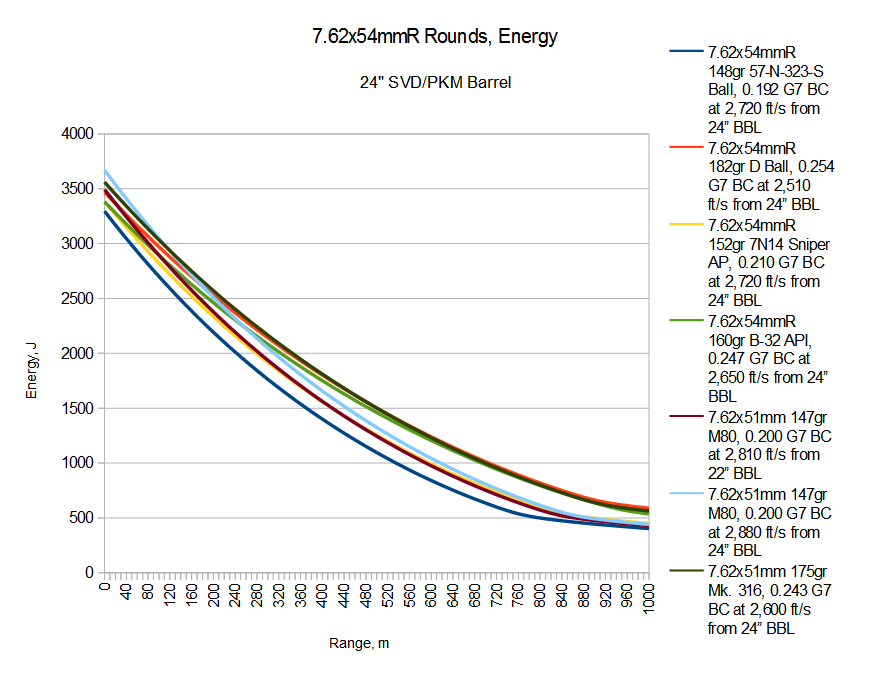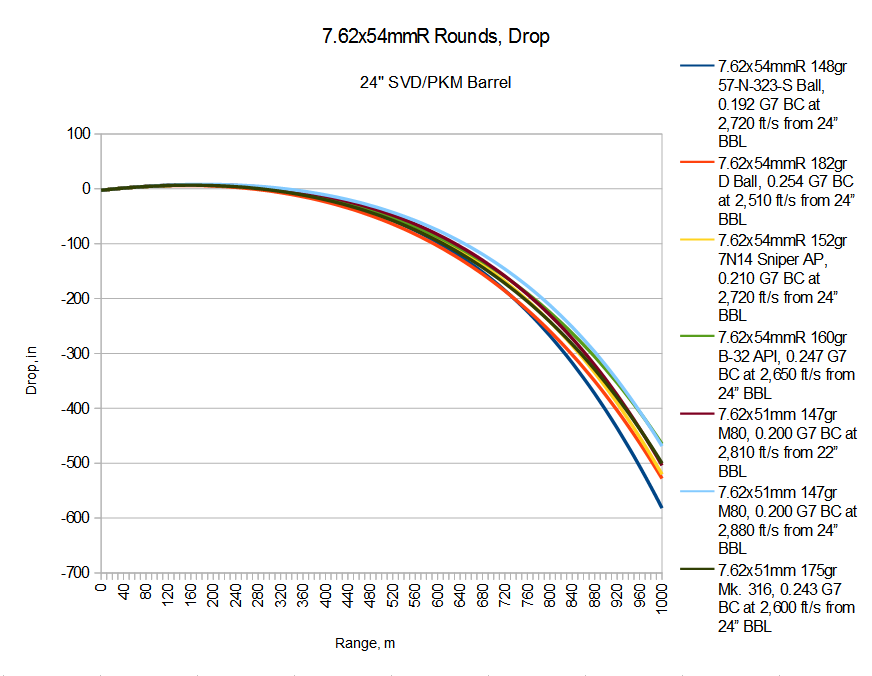Modern? Sure, but let’s take a step back… Way back. It’s 1890 and smokeless powder has just been invented. There’s this guy named Rubin going around and spreading the gospel of the small caliber, high velocity .30″ bore round. You’re in Imperial Russia; what’s your country to do to keep up with this new tide of ammunition innovation?
Why, adopt what would become the longest-serving and most venerable military caliber in the history of the metallic cartridge, of course: The 7.62x54mmR.
With a century and a quarter of service with its home nation, the 7.62x54mmR has a whole lot more history than we want to get into in this humble ballistics article. What’s important is that the caliber has stayed extremely relevant despite its age and superficial obsolescence, and some small arms ammunition theorists even consider it the “round to beat” when it comes to the decision on the next generation caliber configuration.
If any caliber has proved itself, it’s the older Russian 7.62mm, but ballistically, how does it stack up to the NATO-standard 7.62x51mm? Let’s find out:
(Note, I’ve added two data lines that weren’t present in the original 7.62 NATO article; those are M80 Ball from a 24″ barrel, as well as the Mk. 316 175gr sniper round.)
It’s obvious how cluttered the graphs are – this is an indication that we’re talking about some very similar ballistics between the two rounds. In fact, with similar bullet weights, the ballistic performance of the 7.62x54mmR and 7.62 NATO is virtually indistinguishable. With lighter projectiles, the 7.62mm NATO tends to have higher muzzle velocities and better performance, but the gap closes almost completely when both are loaded with heavier projectiles. However, there are some important differences beyond that: First, the 7.62x54mmR comes loaded with a few different ammunition types that the 7.62 NATO lacks, for example the excellent B-32 Armor Piercing Incendiary round. Second, the Russian caliber features steel bullet jackets which can improve the long-range penetration of the round versus the gilding-metal-jacketed 7.62 NATO, especially if a heavy load like the antique 183gr D Ball is used. This means, in theory, that the 7.62x54mmR is perhaps the better machine gun round, while the 7.62 NATO is, thanks to its shorter overall length and rimless case, the superior magazine-fed rifle round.
In terms of weight, the brass cased 7.62 NATO is a little behind, at about 24 grams for the ~147gr varieties, while 7.62x54mmR steel cased 148gr ammunition clocks in at about 22.2 grams.
Still, the differences between the two rounds is slight, and functionally they are pretty much identical. Even though I don’t agree with Jim Schatz that the 7.62x54R SVD and PKM are 1,200m wonder-weapons, I can’t argue with him about the proven effectiveness of the most venerable metallic cartridge ever developed.
Note: All ballistic calculations are done with JBM’s Trajectory calculator, using the ballistic coefficient appropriate to the projectile being modeled. Also, keep in mind that there is no single true velocity for a given round; velocity can vary due to a large number of factors, including ambient temperature and chamber dimensions. Instead, I try to use nominal velocity figures that are representative of the capability of the round in question.
 Your Privacy Choices
Your Privacy Choices




